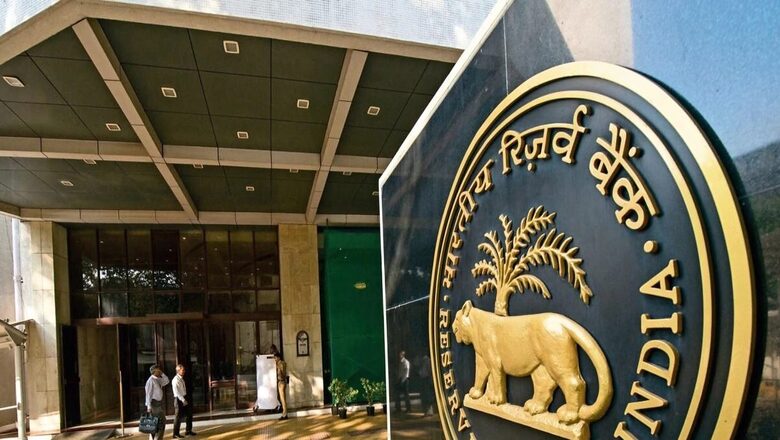
views
India’s retail inflation moderated slightly to 6.44 percent in February, from 6.52 percent in January, government data released on March 13 showed. Yet, this is the second straight month that the headline inflation has stayed above the central bank’s upper tolerance limit of 6 percent, as food prices, which account for a hefty 39 percent weight in the consumer price index, remain stubbornly elevated. A persistently high inflation could prevent the Reserve Bank of India (RBI) from attempting to decouple from the global monetary tightening cycle, potentially hurting the country’s growth prospects. Here’s a lowdown on all things inflation.
What is inflation?
Inflation is defined as the rate at which prices of goods and services increase over a given period of time. This rate of price rise is typically measured on an annual basis. Let’s illustrate inflation with an example. As mentioned above, India’s retail inflation accelerated to 6.44 percent in February from a year earlier. What does this mean? It means that if a basket of goods cost Rs 100 in February last year, it now costs Rs 106.44. In effect, this indicates a decline in the purchasing power of the currency.
Pros and cons of inflation
It is important to understand that inflation, or the general increase in prices, is not always baneful. In fact, moderate and stable inflation acts as an incentive to both producers and consumers. A moderate amount of inflation encourages businesses to keep producing goods and services, earning profits, and driving economic growth in the process. By contrast, a high and volatile inflation rate hurts the economy, as it dampens consumption demand, prompting producers to reduce their output. If these conditions persist for long, economic growth falters and job losses become inevitable.
How has inflation played out globally?
High inflation has been a worldwide phenomenon since the pandemic-induced lockdowns shut down economic activities and disrupted supply chains. But supply-chain disruptions are not alone to be blamed for the post-pandemic price gains. Fiscal expansionism and ultra-loose monetary policies of the advanced economies to mitigate the impact of the Covid-19 pandemic have come back to bite the rich nations. Key global central banks like the US Federal Reserve, Bank of England and European Central Bank slashed lending rates to record lows and instituted what is known as Quantitative Easing (QE), wherein they purchased vast amounts of bonds to inject liquidity into the financial system. These measures dramatically increased the quantum of money supply in the economy, setting the stage for inflation to quicken. For instance, US retail inflation spurted to a four-decade high in June last year, prompting the Federal Reserve to aggressively raise interest rates to tamp down the price gains. The UK saw its consumer-price inflation quicken to a 41-year peak before moderating slightly, while Germany experienced inflation rates not seen since the fall of the Berlin Wall more than three decades ago. To be sure, most economies and their central banks pursued a similar policy mix in varying degrees as the Covid-19 pandemic threatened lives and livelihoods.
…but this is not all
Corporate organisations around the world laid off their employees to contain costs as the viral infection spiralled. But what happened next as the pandemic subsided and commercial activity resumed was unexpected. Workers, mainly in rich economies like the US and Canada, refused to return to work, prompting employers to hike wages to lure them back. Even now, these developed economies are not able to fill all the available vacancies. Thus, labour shortages, despite an increase in hourly wages, have also fuelled price gains. The Russia-Ukraine War, and the punitive sanctions on Russia which has retaliated by tapering off natural gas supplies to Europe, have only worsened the global inflation landscape.
How has India fared?
India is not decoupled from the rest of the world. In a globalised world, what happens, say, in the US or Europe, has an impact on India. India, Asia’s third-largest economy, also imposed Covid lockdowns to curb the spread of the pandemic. Needless to say, this was hugely disruptive. But the Union government, under the leadership of Prime Minister Narendra Modi, displayed exemplary nimbleness in adjusting policy formulations to mitigate the adverse economic impact of the pandemic. His Covid policy framework evolved from Jaan Hai Toh Jahan Hai (prioritising life) to Jaan Bhi, Jahan Bhi (prioritising both life and livelihood). This allowed businesses to resume operations, averting a collapse of the economy. His government extended credit support to companies, saving them from bankruptcy. Economists of all hues slammed him for doing too little and criticised him for not spending enough to stimulate demand. The RBI also followed other global central banks in lowering policy interest rates, but refrained from printing money, unlike its Western counterparts. Evidently, the Modi government had learnt the right lessons from the disastrous profligacy of its predecessor, whose heavy dose of stimulus and the RBI’s loose monetary policy to counter the effects of the 2008 global financial crisis later led to rampant inflation. Thanks to a conservative fiscal policy adopted by the government, and despite immense pressure from experts and economists, India’s inflation, although above the RBI’s upper tolerance level of 6 percent, hasn’t become unhinged. The RBI’s rapid rate increases have begun to show results, with the latest inflation print showing a significant decline from its 8-year peak of 7.8 percent hit in April last year. We must not forget that India imports about 80 percent of its crude oil requirements and international oil prices often rise amid geopolitical tensions, feeding into domestic inflation. The Russia-Ukraine War has snapped off supplies of key farm commodities from Kyiv, heightening inflation.
What next for the RBI?
Major Western economies like the US, UK, and EU are reeling from a cost-of-living crisis amid unrelenting inflation. Thus, there’s unlikely to be any let-up in their war on inflation. Chair of the Federal Reserve of the US, Jerome Powell, inarguably the world’s most powerful central banker, said as much at a recent testimony before the Senate banking panel. Such a hawkish monetary policy stance in the advanced economies complicates the RBI’s task of maintaining price stability while keeping in mind the objective of growth. As things stand, the RBI will find it difficult to not mirror the Fed’s rate actions, despite a growing chorus for it to decouple from the global tightening cycle. The RBI has good reason to move in lockstep with the Fed and raise interest rates, as not doing so could make Indian assets like bonds and currency less attractive for foreign investors, potentially sparking a flight of capital. A weaker rupee vis-à-vis the US dollar would make imports costlier, without necessarily boosting our exports, as the main destinations of India’s merchandise shipments such as the US, UK, and Europe stare at a recession. Also, inflation is a “regressive tax”, disproportionately hurting the poor, and, therefore, it’s vital to curb inflation to protect the poor, and also anchor inflationary expectations for private investments to kick in meaningfully. In the short run, the RBI could sacrifice some growth to firmly tame inflation. India’s economy has held up admirably, despite the twin exogenous shocks of the pandemic and the Russia-Ukraine war. As inflation is gradually brought within the RBI’s tolerance band of 2-6 percent, India’s humongous and growing internal demand coupled with the government’s large expenditure on infrastructure development will likely catapult the country’s GDP into a higher growth orbit, heralding a glorious era of prosperity and global leadership for the world’s fifth-largest economy.
The author is Joint Director (Media) at National Institute of Open Schooling. The views expressed are personal.
Read all the Latest Opinions here



















Comments
0 comment